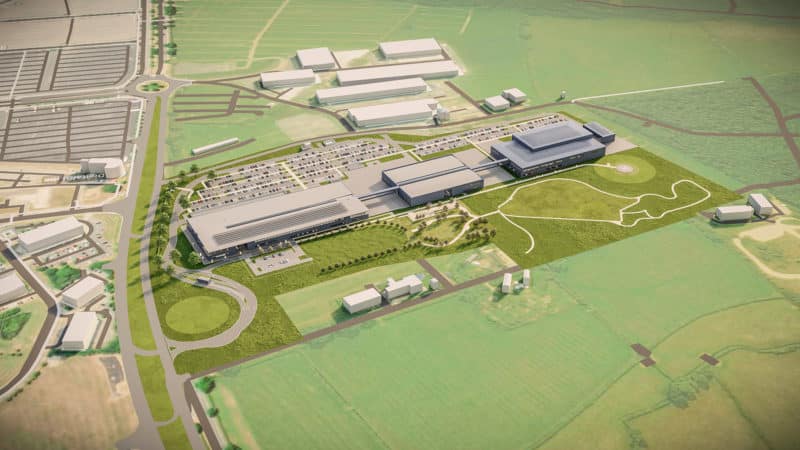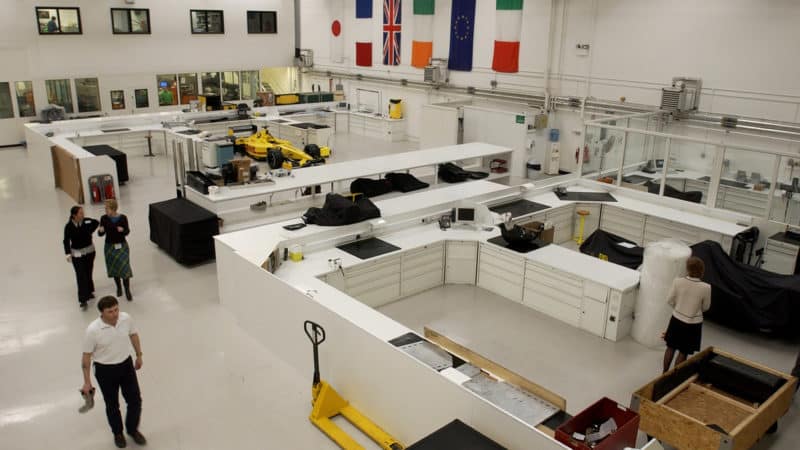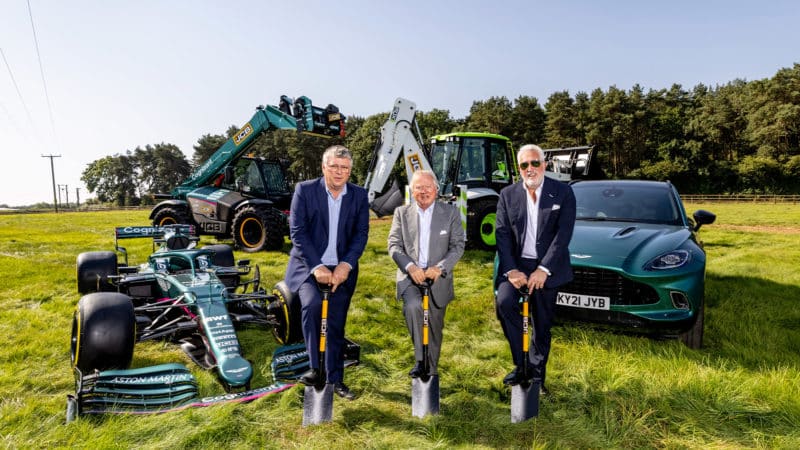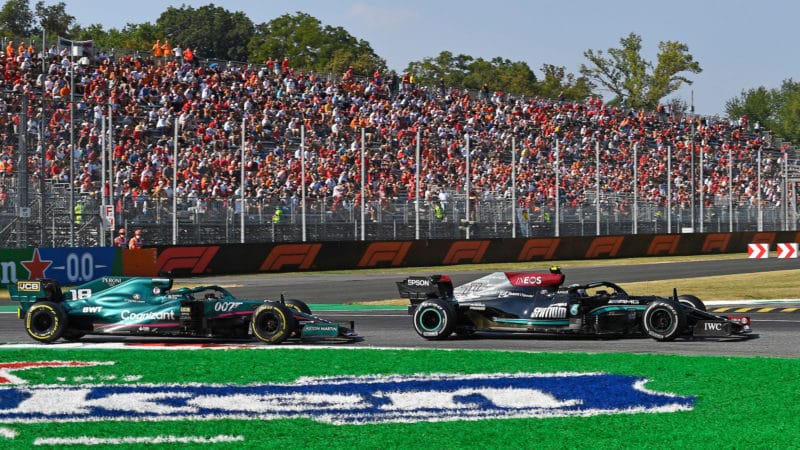It’s also a bold investment given that there’s a proposal that wind tunnels will be banned from F1 from 2030, obliging teams to rely on the ever-improving field of computational fluid dynamics. Stroll is willing to take the risk.
“No one knows what the future will be with wind tunnels past 2030 at this point, but we believe it’s a worthy investment that we’ll have seven or eight years to be able to use it before any decision is made.
“I personally don’t think wind tunnels will disappear. I don’t think it’ll be safe for F1 to all be designed by only CFD. I think rational minds have come to that. But if it’s seven years, at least we’ll have seven years.”
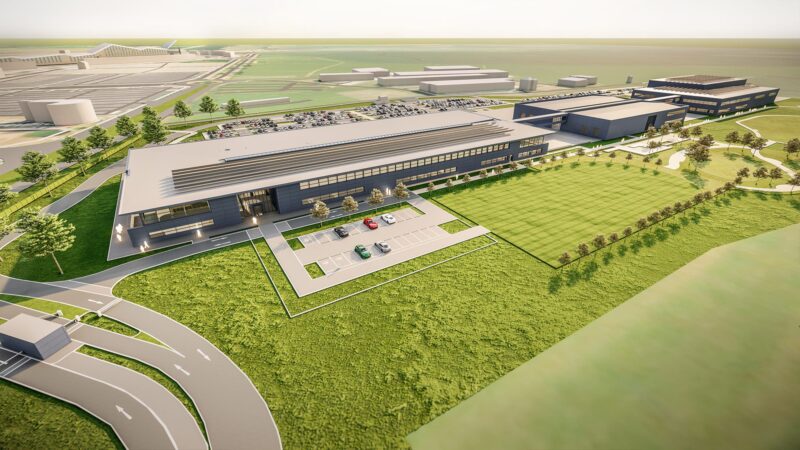
Old factory will be demolished and repalced with a wellness centre that will also house cars from previous seasons
Once the team has moved into the new main building the current factory, which originally was going to switched to alternative uses, will be demolished. It will ne replaced with a multi-use facility, which Stroll describes as “a state-of-the-art wellness centre, cafeteria, simulator, and will house our heritage cars and be able to entertain guests. We’re also going to have a bit of an auditorium/convention centre in this building.”
Stroll makes it clear that when the three elements are completed the new facility, which will total 400,000 square feet, will be the best of any team on the current grid.
“It will be an inspiring and empowering place to work, design, manufacture and hopefully win.”
It’s a bold but perfectly valid claim. The bases of the teams we now know as Mercedes and Red Bull date back to their respective nineties roots as BAR and Stewart respectively, albeit with some expansion and updating along the way. Even the spectacular McLaren Technology Centre in Woking is nearly 20 years old.
“It will be the only one currently fit for purpose with the financial regulations taken into consideration,” says Stroll. “It will also be the first 5G factory, be completely sustainable, it will be a true smart factory in every sense of the word. This is really following suit in line with our aggressive and ambitious recruitment drive.
“Here we will be able to have the headcount that we so desperately want and need, again to fulfil my ambitions to fighting for World Championships.
“And it will be an inspiring and empowering place in which to work, design, manufacture and hopefully win.
“There’s been nothing like it ever before in automotive, whether F1 or any other [area], certainly not in racing. That shows my belief in the team. It confirms my ambitions. And it confirms my belief in F1, because this is really an investment as well in F1.”
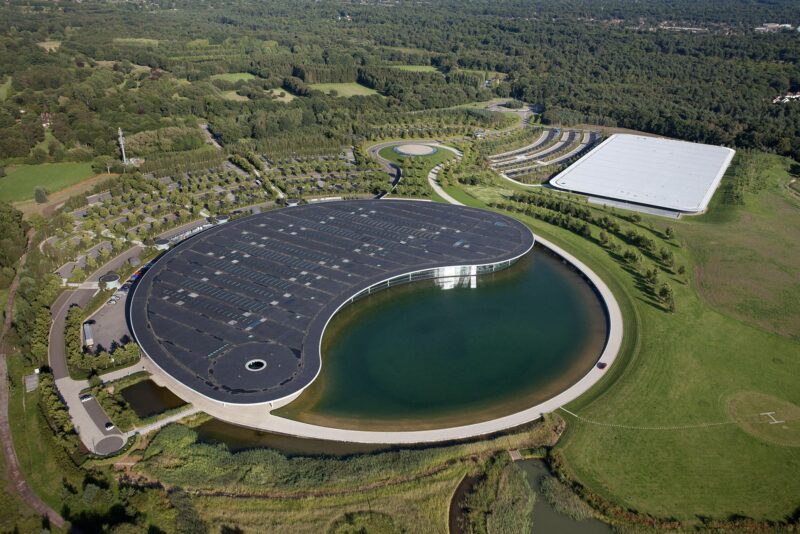
Aston Martin’s new factory more utilitarian than McLaren Technology Centre
McLaren
You might think this is all sounding a bit like the MTC, which Ron Dennis moulded to reflect his personality – and which was famously soon outgrown by the racing team it houses. Stroll insists that the Aston base is being built for practicality, rather than vanity.
“This is the reverse of what Ron Dennis did with Norman Foster with the McLaren Technology Centre. This is a factory, a campus, again fit for purpose to match the DNA and the culture of ourselves, of our history, of our purpose. What it’s been built for is to be able to be efficient, to be streamlined, to again have everybody sitting side-by-side under one roof.
“And this is taking into consideration the new financial regulations, and also taking into consideration where we believe the sport will be going in the future.
“So we can build more bays if we want, we can shrink not by shrinking the size of the building, but moving people closer together. But this is a building that will truly represent our image, our culture and our DNA.”
He insists that it won’t be Aston in name only: “It’s instilling we are now Aston Martin, and will be forever. It is instilling the culture and the DNA from Aston Martin to this great historical past. Also architecturally speaking, it will be designed as an Aston Martin-inspired building. So the feeling, the colours, the smell, the lighting, the what have you will reflect our Aston Martin corporate identity.”

“Money talks very loud, doesn’t it?” says Stroll
With fortuitous timing as noted Stroll and his management team have been able to target their plans around the budget cap levels mandated by the F1 financial regulations.
In other words they now know what a realistic headcount target is for the coming seasons, they know how those numbers will be spread around the various departments, and they were able to fine tune the design to suit. In contrast after expanding over the years Mercedes and Red Bull are furiously downscaling to meet the cap requirements.
“On the downside we’re a few years behind because of Covid to build this building,” says Stroll. “It was the intent to have this building in place today. But I truly do believe we’re in a better state than the very large teams that have to downsize, which is demotivational.

